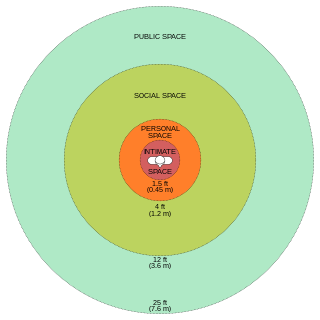Related Research Articles
A paradigm shift is a fundamental change in the basic concepts and experimental practices of a scientific discipline. It is a concept in the philosophy of science that was introduced and brought into the common lexicon by the American physicist and philosopher Thomas Kuhn. Even though Kuhn restricted the use of the term to the natural sciences, the concept of a paradigm shift has also been used in numerous non-scientific contexts to describe a profound change in a fundamental model or perception of events.
A theory is a rational type of abstract thinking about a phenomenon, or the results of such thinking. The process of contemplative and rational thinking is often associated with such processes as observational study or research. Theories may be scientific, belong to a non-scientific discipline, or no discipline at all. Depending on the context, a theory's assertions might, for example, include generalized explanations of how nature works. The word has its roots in ancient Greek, but in modern use it has taken on several related meanings.

Reductionism is any of several related philosophical ideas regarding the associations between phenomena which can be described in terms of other simpler or more fundamental phenomena. It is also described as an intellectual and philosophical position that interprets a complex system as the sum of its parts.
A scientific theory is an explanation of an aspect of the natural world and universe that can be repeatedly tested and corroborated in accordance with the scientific method, using accepted protocols of observation, measurement, and evaluation of results. Where possible, some theories are tested under controlled conditions in an experiment. In circumstances not amenable to experimental testing, theories are evaluated through principles of abductive reasoning. Established scientific theories have withstood rigorous scrutiny and embody scientific knowledge.

Content analysis is the study of documents and communication artifacts, which might be texts of various formats, pictures, audio or video. Social scientists use content analysis to examine patterns in communication in a replicable and systematic manner. One of the key advantages of using content analysis to analyse social phenomena is their non-invasive nature, in contrast to simulating social experiences or collecting survey answers.
A conceptual framework is an analytical tool with several variations and contexts. It can be applied in different categories of work where an overall picture is needed. It is used to make conceptual distinctions and organize ideas. Strong conceptual frameworks capture something real and do this in a way that is easy to remember and apply.

In its most common sense, methodology is the study of research methods. However, the term can also refer to the methods themselves or to the philosophical discussion of associated background assumptions. A method is a structured procedure for bringing about a certain goal, like acquiring knowledge or verifying knowledge claims. This normally involves various steps, like choosing a sample, collecting data from this sample, and interpreting the data. The study of methods concerns a detailed description and analysis of these processes. It includes evaluative aspects by comparing different methods. This way, it is assessed what advantages and disadvantages they have and for what research goals they may be used. These descriptions and evaluations depend on philosophical background assumptions. Examples are how to conceptualize the studied phenomena and what constitutes evidence for or against them. When understood in the widest sense, methodology also includes the discussion of these more abstract issues.

In research design, especially in psychology, social sciences, life sciences and physics, operationalization or operationalisation is a process of defining the measurement of a phenomenon which is not directly measurable, though its existence is inferred from other phenomena. Operationalization thus defines a fuzzy concept so as to make it clearly distinguishable, measurable, and understandable by empirical observation. In a broader sense, it defines the extension of a concept—describing what is and is not an instance of that concept. For example, in medicine, the phenomenon of health might be operationalized by one or more indicators like body mass index or tobacco smoking. As another example, in visual processing the presence of a certain object in the environment could be inferred by measuring specific features of the light it reflects. In these examples, the phenomena are difficult to directly observe and measure because they are general/abstract or they are latent. Operationalization helps infer the existence, and some elements of the extension, of the phenomena of interest by means of some observable and measurable effects they have.
In machine learning and pattern recognition, a feature is an individual measurable property or characteristic of a phenomenon. Choosing informative, discriminating and independent features is a crucial element of effective algorithms in pattern recognition, classification and regression. Features are usually numeric, but structural features such as strings and graphs are used in syntactic pattern recognition. The concept of "feature" is related to that of explanatory variable used in statistical techniques such as linear regression.
In statistics, classification is the problem of identifying which of a set of categories (sub-populations) an observation belongs to. Examples are assigning a given email to the "spam" or "non-spam" class, and assigning a diagnosis to a given patient based on observed characteristics of the patient.
Exploratory research is "the preliminary research to clarify the exact nature of the problem to be solved." It is used to ensure additional research is taken into consideration during an experiment as well as determining research priorities, collecting data and honing in on certain subjects which may be difficult to take note of without exploratory research. It can include techniques, such as:
The term conceptual model refers to any model that is formed after a conceptualization or generalization process. Conceptual models are often abstractions of things in the real world, whether physical or social. Semantic studies are relevant to various stages of concept formation. Semantics is fundamentally a study of concepts, the meaning that thinking beings give to various elements of their experience.

Research design refers to the overall strategy utilized to answer research questions. A research design typically outlines the theories and models underlying a project; the research question(s) of a project; a strategy for gathering data and information; and a strategy for producing answers from the data. A strong research design yields valid answers to research questions while weak designs yield unreliable, imprecise or irrelevant answers.

Data and information visualization is the practice of designing and creating easy-to-communicate and easy-to-understand graphic or visual representations of a large amount of complex quantitative and qualitative data and information with the help of static, dynamic or interactive visual items. Typically based on data and information collected from a certain domain of expertise, these visualizations are intended for a broader audience to help them visually explore and discover, quickly understand, interpret and gain important insights into otherwise difficult-to-identify structures, relationships, correlations, local and global patterns, trends, variations, constancy, clusters, outliers and unusual groupings within data. When intended for the general public to convey a concise version of known, specific information in a clear and engaging manner, it is typically called information graphics.
Paul Richard Thagard is a Canadian philosopher who specializes in cognitive science, philosophy of mind, and the philosophy of science and medicine. Thagard is a professor emeritus of philosophy at the University of Waterloo. He is a writer, and has contributed to research in analogy and creativity, inference, cognition in the history of science, and the role of emotion in cognition.
Models of scientific inquiry have two functions: first, to provide a descriptive account of how scientific inquiry is carried out in practice, and second, to provide an explanatory account of why scientific inquiry succeeds as well as it appears to do in arriving at genuine knowledge. The philosopher Wesley C. Salmon described scientific inquiry:
The search for scientific knowledge ends far back into antiquity. At some point in the past, at least by the time of Aristotle, philosophers recognized that a fundamental distinction should be drawn between two kinds of scientific knowledge—roughly, knowledge that and knowledge why. It is one thing to know that each planet periodically reverses the direction of its motion with respect to the background of fixed stars; it is quite a different matter to know why. Knowledge of the former type is descriptive; knowledge of the latter type is explanatory. It is explanatory knowledge that provides scientific understanding of the world.
Feminist epistemology is an examination of epistemology from a feminist standpoint.
A feature, in the context of geography and geographic information science, is something that exists at a moderate to global scale at a location in the space and scale of relevance to geography; that is, at or near the surface of Earth. It is an item of geographic information, and may be represented in maps, geographic information systems, remote sensing imagery, statistics, and other forms of geographic discourse. Such representations of features consist of descriptions of their inherent nature, their spatial form and location, and their characteristics or properties.
Peter G. Ossorio was an American psychologist best known for his development of descriptive psychology, a pragmatic and theory neutral pre-empirical approach to the study of behavior. Ossorio in his 2006 volume, The Behavior of Persons, explicated the concept of "Persons" by creating a conceptual map of the interdependent concepts of "Individual Person", "Language", "Action", and "Reality". He described persons as individuals whose history is, paradigmatically, a history of Deliberate Action in a dramaturgical pattern.
Classification is a broad concept that comprises the process of classifying, the set of groups resulting from classifying, and the assignment of elements to pre-established groups. Classifying is a fundamental concept and a part of almost all kinds of activities. Classification itself is an interdisciplinary field of study, with contributing disciplines including philosophy, biology, knowledge organization, psychology, statistics, and mathematics.
References
- ↑ Shields, Patricia and Rangarajan, N. 2013. A Playbook for Research Methods: Integrating Conceptual Frameworks and Project Management. Stillwater, OK: New Forums Press. See Chapter 4 for an in-depth discussion of descriptive research.
- ↑ Shields, Patricia and Hassan Tajalli. 2006. "Intermediate Theory: The Missing Link in Successful Student Scholarship". Journal of Public Affairs Education. Vol. 12, No. 3. Pp. 313-334. http://ecommons.txstate.edu/polsfacp/39/ Archived 2021-02-24 at the Wayback Machine
- ↑ Casadevall, Arturo; Fang, Ferric C. (September 2008). "Descriptive Science". Infection and Immunity . 76 (9): 3835–3836. doi:10.1128/IAI.00743-08. PMC 2519409 . PMID 18625736.
- ↑ BioScience Volume 57, Issue 8 (September 2007) article Why Descriptive Science Still Matters by D.A. Grimaldi & M.S. Engel
- ↑ Heikki J. Koskinen et al. (eds.) Science – A Challenge to Philosophy? - Peter Lang GmbH, Frankfurt am Man, 2006. Archived 2011-06-10 at the Wayback Machine article The scope and limits of value-freedom in science - Panu Raatikainen